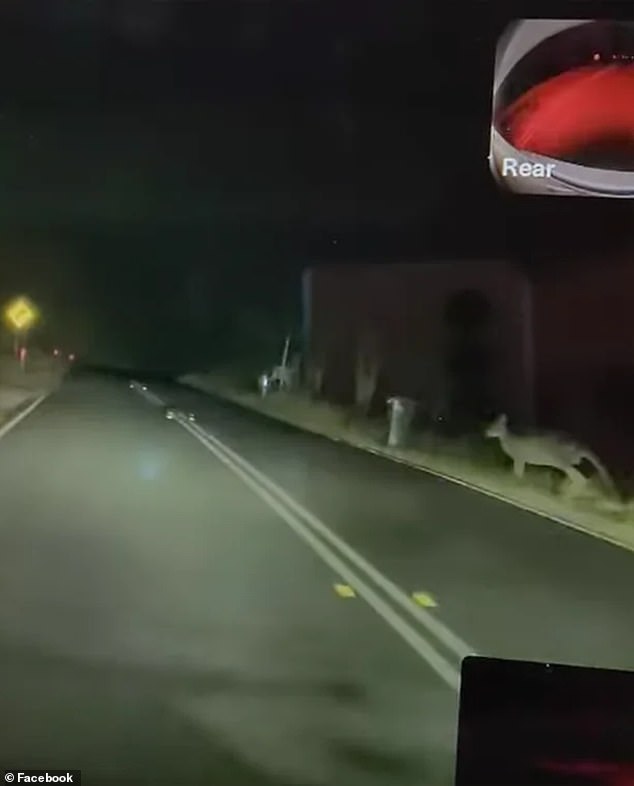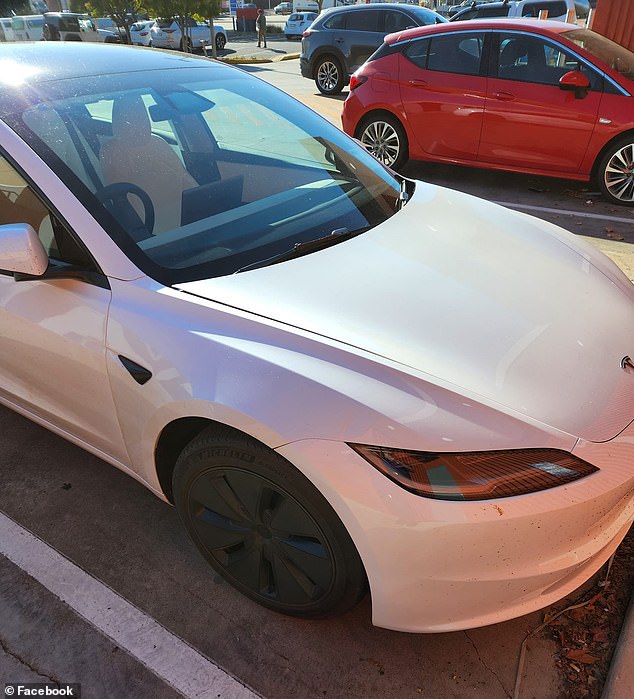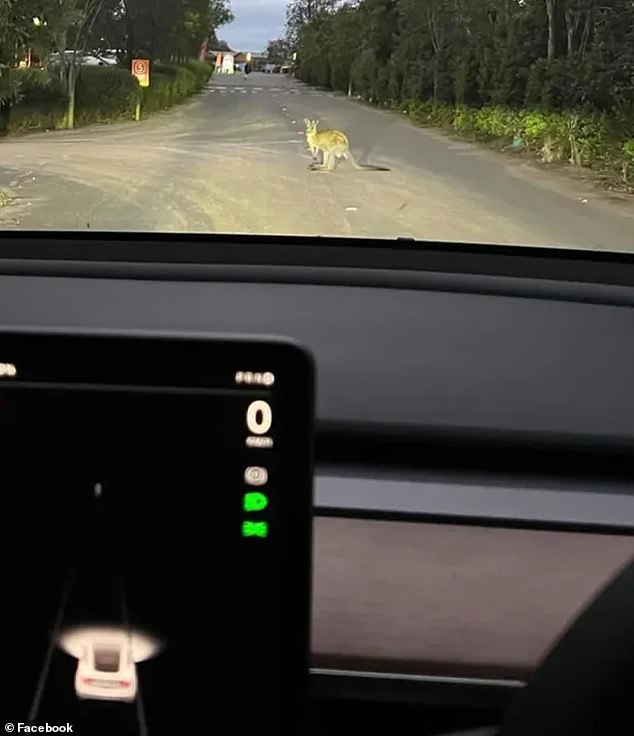A collision with a kangaroo on the highway left a Tesla driver with a repair bill worth hundreds of dollars due to a little-known safety feature.
Adam Goff reported his problems to other Tesla drivers in an exclusive Facebook group after colliding with a roo on a rural New South Wales road around 6am on Tuesday.
Mr. Goff slammed on the brakes and his dash cam captured the kangaroo colliding with his car so gently that the animal didn’t even fall.
Even though both the kangaroo and the car escaped without a scratch, Goff soon had to spend $500 out of pocket to repair his Tesla Model 3 after its “active hood” feature activated.
Active Hood opens the rear of the Tesla’s hood after detecting a crash to reduce damage to the car and any people or animals that are hit.
Adam Goff was hit with a $500 repair fee after the hood active safety feature activated on his Tesla Model 3 around 6 a.m. Tuesday.

Goff was traveling on a rural road in New South Wales when he gently hit a kangaroo, but the impact was enough to activate the safety feature.
Goff shared his problems on the Tesla Owners Australia community group and explained that the worst part of the accident was his embarrassment.
“I had an accident with a roo, I only hit him when I hit the brakes, so I didn’t damage the car,” he wrote.
“However, the active hood has deployed, how much does it cost to reset it? Is it there anyway? I can push it back so it’s less embarrassing to drive with it.”
After parking the car, Mr. Goff tried to put the hood back in place, but those in the comments said it needed service.
‘The hood deployment process is destructive. Needs explosive struts replaced. It’s probably best to get insurance. It’s not as simple as just being pushed down,” one man wrote.
When the explosive struts are activated, an error message remains on the dashboard until the car is serviced and the hood is restored.
Another commenter advised Mr Goff to immediately book a service for the car, as the owner’s manual indicated it was the correct course of action.
“It says to take the car to the service center immediately, so do it; you can point them to the website as justification,” they wrote.
When Mr. Goff confirmed that the service center’s quote was $500 to reattach the hood, some people noted that he “got lucky” or that there were more expenses to come.
‘It happened to me about a month ago…the initial quote they gave me was $500. “After a technician took a look at the service center, I got a call saying it was going to cost me $2,000,” said one Tesla owner.

Mr. Goff temporarily put the hood back in place, but after the active hood was activated, an error message remained on his dashboard until proper maintenance was performed.

Tesla owners have noticed that the brand’s sensory system, ‘Tesla Vision’, has trouble detecting kangaroos, but can detect pedestrians, cyclists and dogs.
Many commenters noted that Teslas are ill-equipped to deal with kangaroos due to their overly sensitive safety features.
Another complaint was that the car’s motion sensor cannot detect them on the road.
The ‘Tesla Vision’ multi-camera system can detect pedestrians, cyclists and dogs, and then display them on the dashboard for the driver to see and avoid.
Kangaroos, however, appear to be ghosts to the system, as demonstrated by one driver when he took a photo of one sitting right in front of his car without being detected.
“Just a heads up for Tesla owners driving cross-country…Tesla Vision does not recognize our national wildlife, such as our iconic kangaroo,” he said.
“Please take the usual precautions to slow down and be alert, especially during dusk and dawn.”
Daily Mail Australia has contacted Tesla for comment on its active bonnet and kangaroo detection.

